Skunked
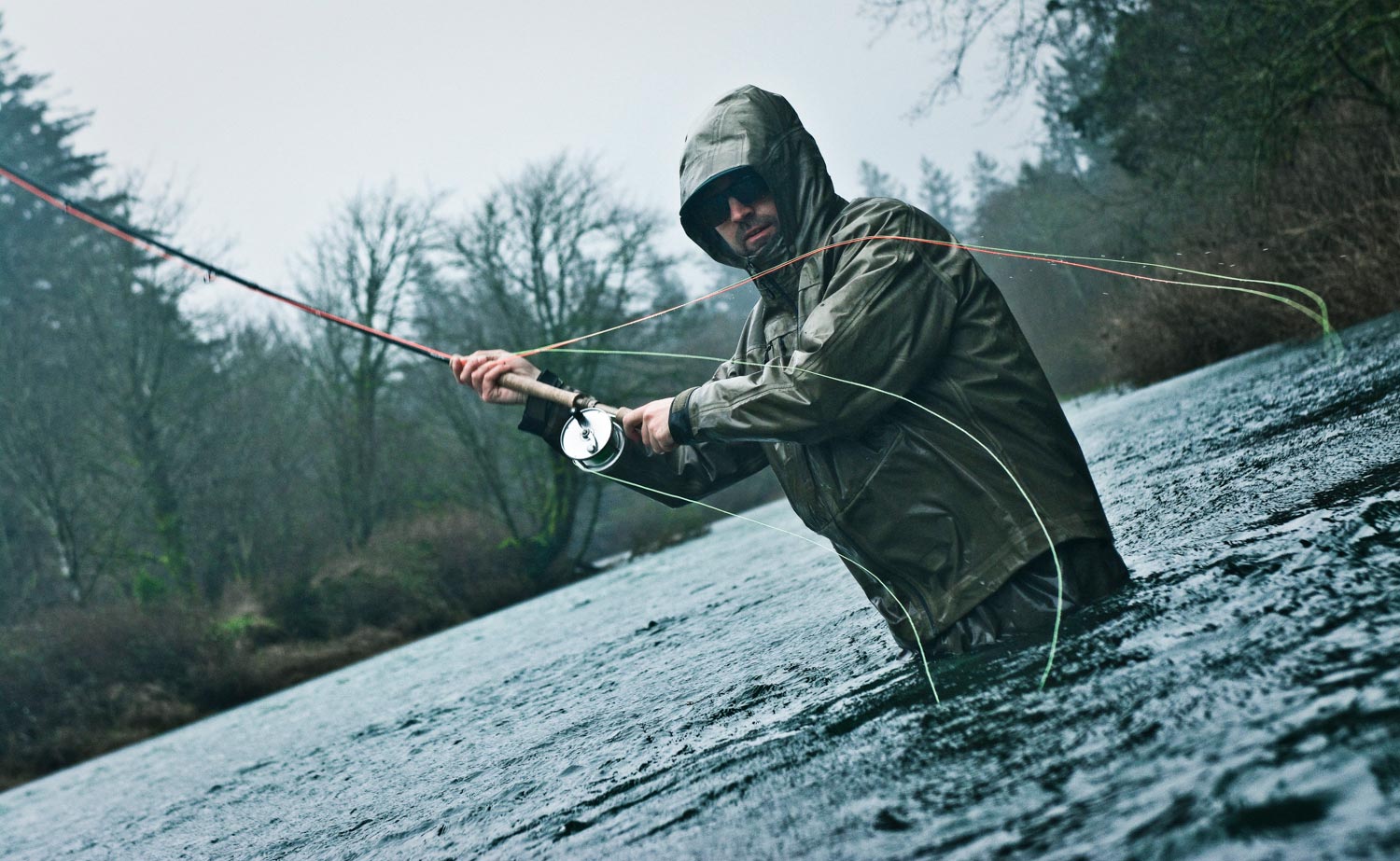
I POUR MYSELF A STIFF RYE WHISKY AND SETTLE IN ON THE COUCH TO WATCH THE RAIN. I’VE HAD THIS COMING TO ME FOR QUITE SOME TIME.
There are no steelhead rivers in Georgia, or anywhere near Georgia. For me to chase these fish I love usually means spending a minimum of five hours in a middle seat, both ways, and parting with a substantial chunk of the annual fishing budget. I do it every time I get the chance.
I cut my teeth on the tributaries of the Great Lakes, fishing huge garish glow bugs, but once I learned to cast a Spey rod and felt the pull of a wild Pacific steelhead the lake run fish didn’t scratch the itch any longer. There’s nothing wrong with those great fish, I had just moved on. Years later I find myself with a pile of two-handers and a suitcase full of frequent-flier miles. However geographically undesirable, I can’t give up steelhead.
Let’s face it, swinging flies for steelhead is stupid. That’s to say that there are a hundred better ways to catch them. If catching fish is what you care about, fish bait. Ok. Please don’t fish bait but get yourself a box of beads or a handful of egg flies or marabou jigs and tear them up. The guys you see swinging flies are in it for something else. Even though I’m one of them, I’m not sure exactly what.
I can, and have, gotten very romantic about it but I’ll spare you for now. There’s just something about the whole process, the feel of the swing, the elaborate and hopefully beautiful cast, the elegant flies and complex lines and, of course, the grab of the fish that feeds some need I don’t fully understand. I want to catch fish. Desperately sometimes but not so desperately that I pick up the nymph rod. Not because I’m too good for it but because it’s not what I want.
The cost of this mania, as anyone who has ever done it knows, is the ever present risk of getting skunked. It’s always right there with you. It’s on the plane next to you. It’s in the boat. It’s low-holing you in every run. It snuggles up next to you in the bed, its awkward boner pressed against your backside. It’s in you dreams. Dreams where suave Disneyesque skunks bring you heart-shaped boxes of goose eggs. From the minute you pick up the long rod with two feet of cork, the skunk is riding shotgun.
Here’s the uncomfortable truth.
Read More »Dealing With Stuck Ferrules The Right Way
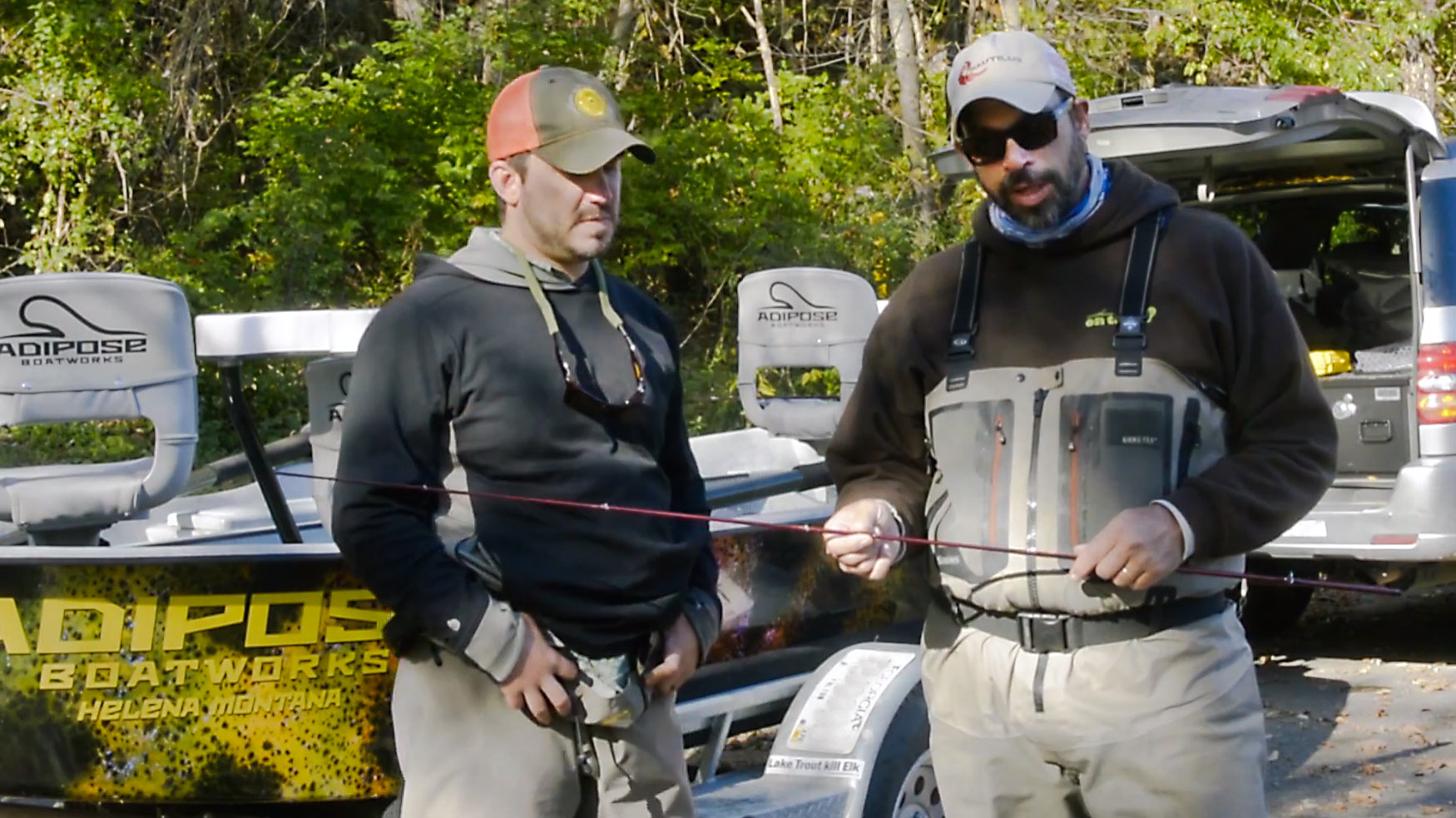
Here’s the best way to separate stuck ferrules on a fly rod.
Ferrules stick. It’s a fact of life and when pulling them apart you can break a rod if you’re not careful. I learned this trick from an old friend and skilled bamboo rod maker, Gary Lacey. With the help of a friend you can separate those stuck ferrules in a second with no risk to you rod.
CHECK OUT THIS VIDEO AND SEE HOW TO SEPARATE SERIOUSLY STUCK FERRULES ON A FLY ROD.
Read More »Friends Don’t Let Friends Fish Muds
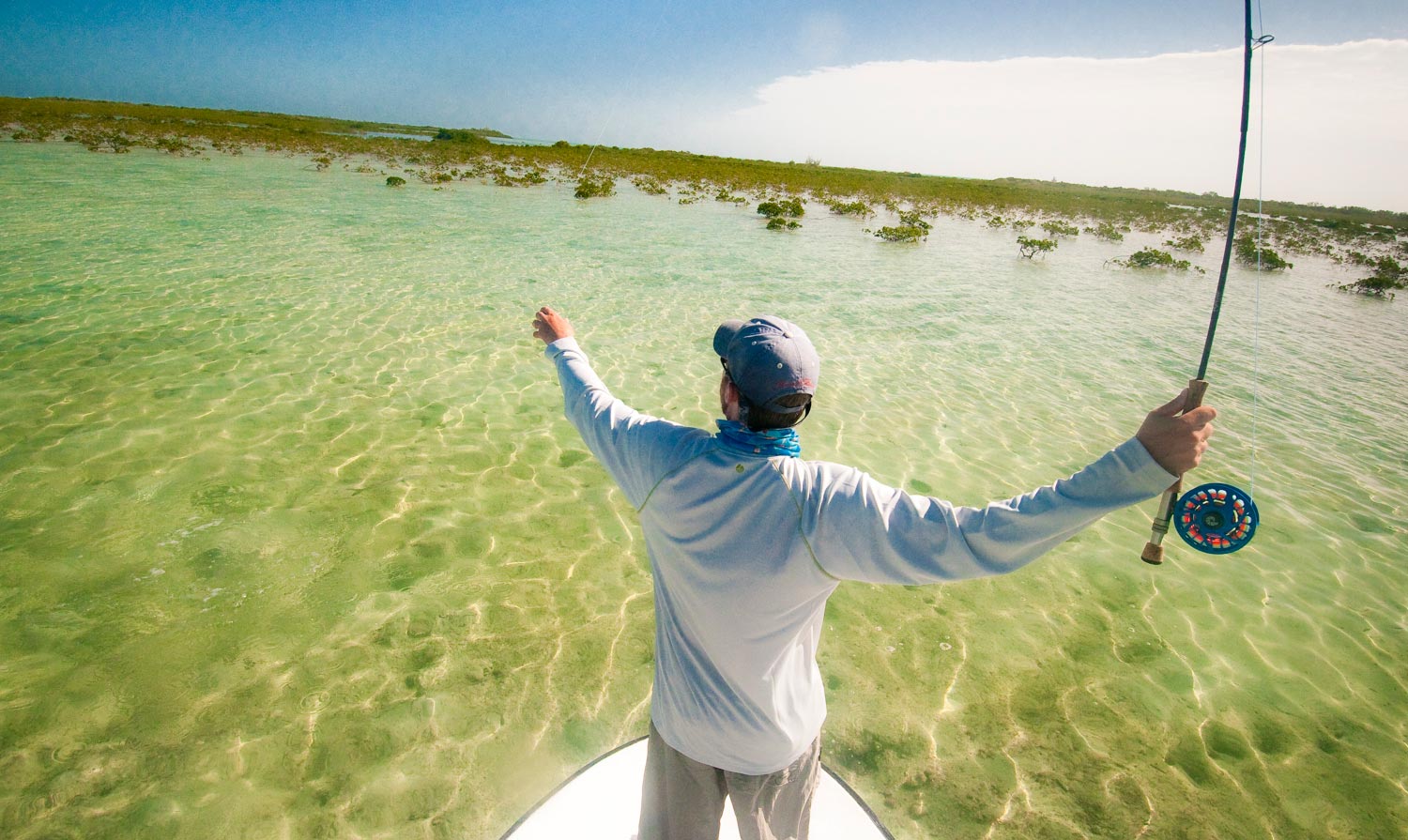
“THIS IS THE KIND OF BONEFISHING THAT RUINS YOU. THE KIND OF FISHING THAT IMPAIRS YOUR ABILITY TO MAKE GOOD DECISIONS.”
The sky is a perfect robin’s egg blue. Reflections of the morning sun dance on the underside on the mangroves giving the bright green leaves an unnatural glow. A breath of breeze cools my face in contrast to the warm sun on my back. Sixty or seventy yards in front of the boat there is a small school of nice size bonefish moving our way along the edge of the mangroves. It is a perfect morning on South Andros.
This flat is called Dodum. Dodum flat is a large white sand flat adjacent to the ocean at the mouth of Dodum Creek. The sand of the flat is as perfect as fresh snow and the water is a uniform depth of one to four feet depending on the tide. With the tide out, it’s a great wade and with it in, you can spend a whole day poling a boat around it. Dodum is big. Picture a Wal-Mart. Now picture the piece of land a Wal-Mart sits on, parking lot and loading docks included. Dodum is five times that size.
The tide is just beginning to fall and Captain Freddy is poling Kent and me along the mangroves at the edge of the flat. We are picking up fish as they come out of the mangroves with the tide. They are nice fish, averaging five or six pounds and there are plenty of them. We’re putting good numbers on the board early.
This is Kent’s first trip to South Andros. It’s my favorite place in the world to fish and he’s listened to me go on about it for countless hours. It’s our third day of fishing and, though the fishing has been good, Kent has yet to have one of those South Andros ‘magic days’. Almost anyone who has fished this place knows what I’m talking about. When the stars line up, things happen on South Andros that make your friends call you a liar.
Though Kent and I fish together all the time and have made some truly epic trips together, it just hasn’t worked out for us to make this trip. I’ve lost count of the days I’ve spent on Andros, but for me this trip is special. This time I get to show my best fishing buddy my favorite water in the world. Any fish I catch is a surplus to my excitement. Watching Kent, a look of child-like wonder on his face, soak in the beauty of this place and feel the power of these fish, that’s what I’m here for.
“You picked a fine time to leave me Lucille,” Freddy bursts into song as
Read More »So You Wanna Run Down the Man?
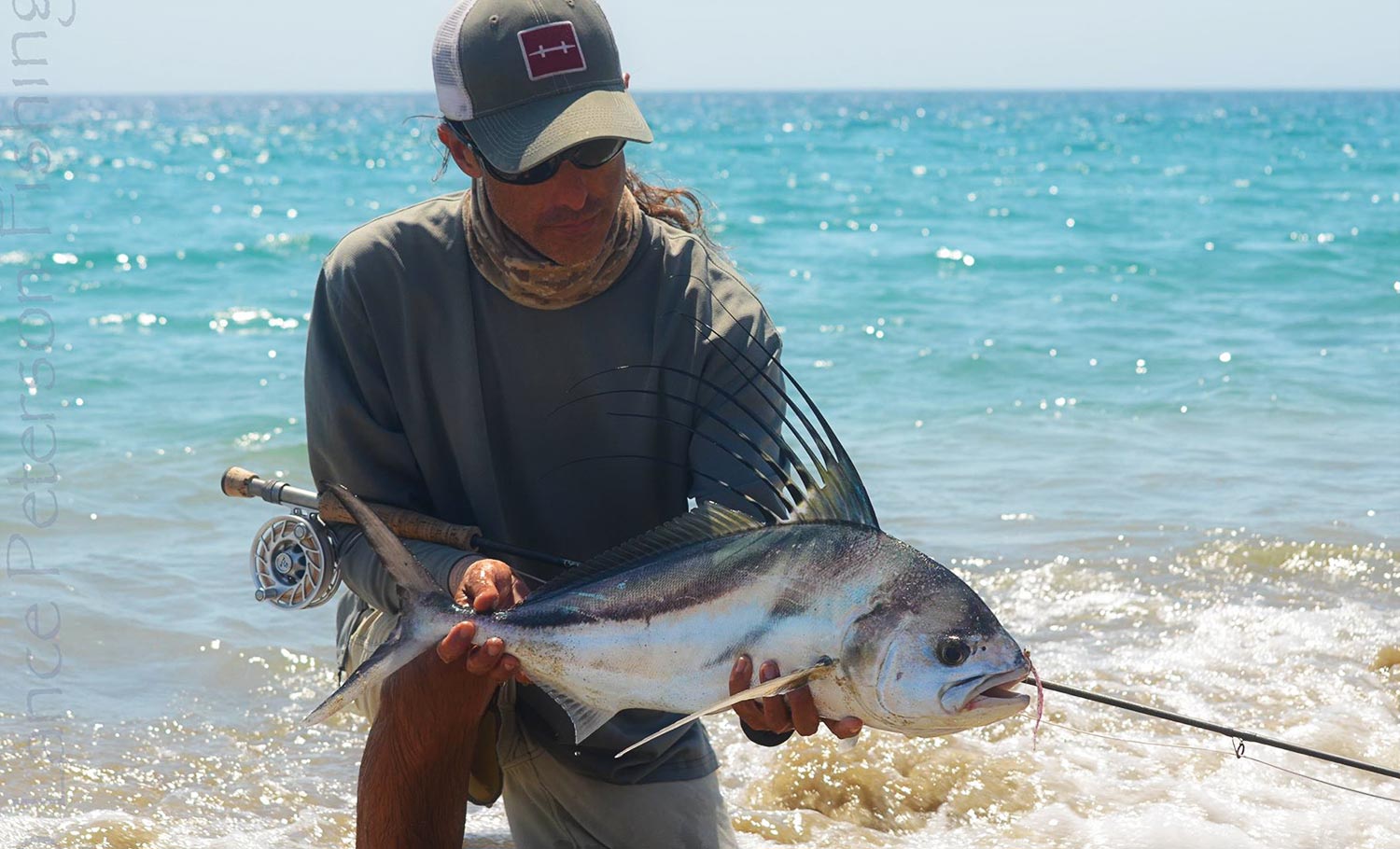
Roosterfish(pez gallo) in my opinion, are by far one the hardest fighting and elusive fish that can be pursued with a fly rod.
Most of you by now have seen some type of video where anglers are cruising down the beach in a side-by-side or quad, sprinting along pristine desolate beaches to make a hail Mary cast at a rooster 15 feet off the surf and then sipping margaritas in the evening celebrating their victory of the day. Well, you know the saying ‘that only happens in the movies’…although it’s not 100% true in this case, however you’re damn lucky if you head down to Baja and land one without preparing for this pursuit. Just to be clear, I’m not claiming to be the authority on how to catch roosters. My intention is to share what I’ve learned in my experiences down on the east cape of Mexico chasing them.
Background
To give you some background on how this obsession began, it wasn’t through any type of movie or social media pics of grandes (roosters 40lbs+) but actually through something I witnessed with my own two eyes. Back in May of 2012, my girlfriend and I had just broken up; so what better way to move on than a boys fishing trip to Cabo? With two of my more salt-worthy amigos on board, getting their passports stamped south of the border, coupled with the opportunity to land marlin, dorado, tuna, etc…it was game on. Since I was the one in charge of logistics I chose to stay just north of Cabo San Lucas in San Jose del Cabo so that we had fewer distractions from sleep at night, but was there if we “needed” it. Fishing with the Gordo Banks fleet, on our second day while at the dock one of the captains mentioned there were lots of roosters on the beach. Even though all of us had billfish on our cloudy sleep-deprived brains, we decided, “why not?” We trolled for them about 50ft off the beach using cabillito and landed a good number among the three of us. But on one our passes while trolling, I noticed something on the beach after the wave retracted. It was probably close to a 30lb rooster laying on the sand. For a second I wondered, was it dead?? And then the next wave came in and the mystery was solved as I saw four to five different sets of rooster combs going ballistic chasing baitfish onto the beach. And then again, one guy didn’t make the last call and was stuck waiting for the next wave to take him back to the lion’s den. I had never seen any fish exhibit that type of aggression, and at that point I remember thinking, “man, I bet they are fun as hell on a fly rod.”
In late spring, 2014, with a couple additional trips back to southern Baja under my belt, I decided that I needed more time to dedicate chasing roosters. So I moved down to Los Barriles, a small town about 70 miles north of San Jose Del Cabo, located smack in the middle of rooster alley for 5 months. Now that might raise some questions. I work remotely so as long as I have a stable internet connection with decent speeds, I’m good to go. With my quad that I had purchased back in San Diego rigged with rod holders and baskets for ample storage I was ready to tangle with some of those grandes on my 10wt, or so I thought.
Lessons Learned & Words of Advice
Logistics
Travel — Getting to the East Cape of Mexico is pretty straightforward and can be fairly inexpensive depending on where you are flying from. If you’re really adventurous, the drive through the Baja peninsula is something I’d recommend doing at least once in your life. From San Diego, it’s just about 1600 miles zig-zagging back and forth from coast to coast. Just make sure you’ve got a reliable car or at least one that has a working fuel gauge — unlike us. Blinkers are also a good thing to have, as well. If you do chose to fly, getting from the airport to basecamp does not require you to rent a car, in fact I’d say it really isn’t needed as the only required mode of transportation has to be able to drive on the beach (do not think renting a jeep will work). There’s a shuttle (EcoTours) that runs from SJD airport right into the town of Los Barriles that has AC and it’s usually a good time.
Base Camp — Establishing a base camp on the East Cape
Unhang My Fly You Villain Stump!
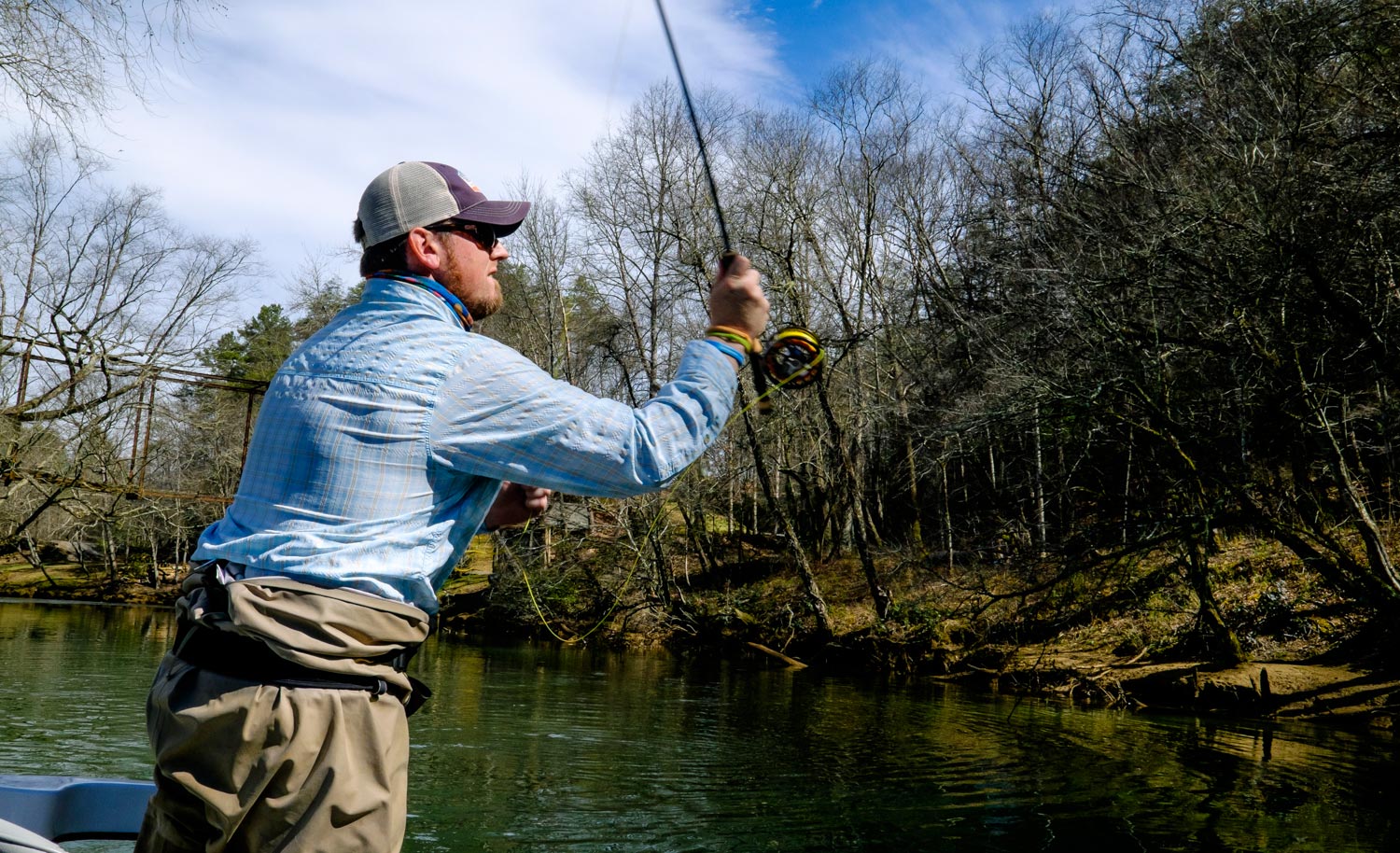
One of the unavoidable happenings in fly fishing is the oh-so-wonderful snag.
Overhead limbs, rocks, submerged timber, rhodo, your net man… you name it, it’s out there just waiting to snatch your fly from the air. A lot of the time it’s game over for your rig. You just have to break it off and move on after a short grieving period. There are, however, certain scenarios where one simple trick can save your flie(s) from being lost to the Water Nymphs. It’s by no means 100% effective, but it’s easy and worth a few tries before snapping your tippet.
First thing, if you’ve discerned that your fly is hung up on something solid on the bottom, or you’ve laid your flies across a log, or any other obstacle, sit tight for a second. Don’t set the hook into it any further! Before you going tugging on your rod like you’re Magnus Ver Magnusson, do this….
Strip in the majority of your line, leaving it just taught enough to lift your fly line above the water. Once the fly line is ABOVE the water, bring your fly rod tip to 12 o’clock like you would to make a roll cast. You may need to slip a little more line as you position your rod correctly. Once you’ve gotten everything situated, execute a firm roll cast straight at your fly. The loop created by the cast will transfer momentum past the fly, opposite of the direction that it was snagged, potentially releasing the hook from the snag. Didn’t work the first time? Try again, but this time
Read More »Strike Indicators, What Matters to Me
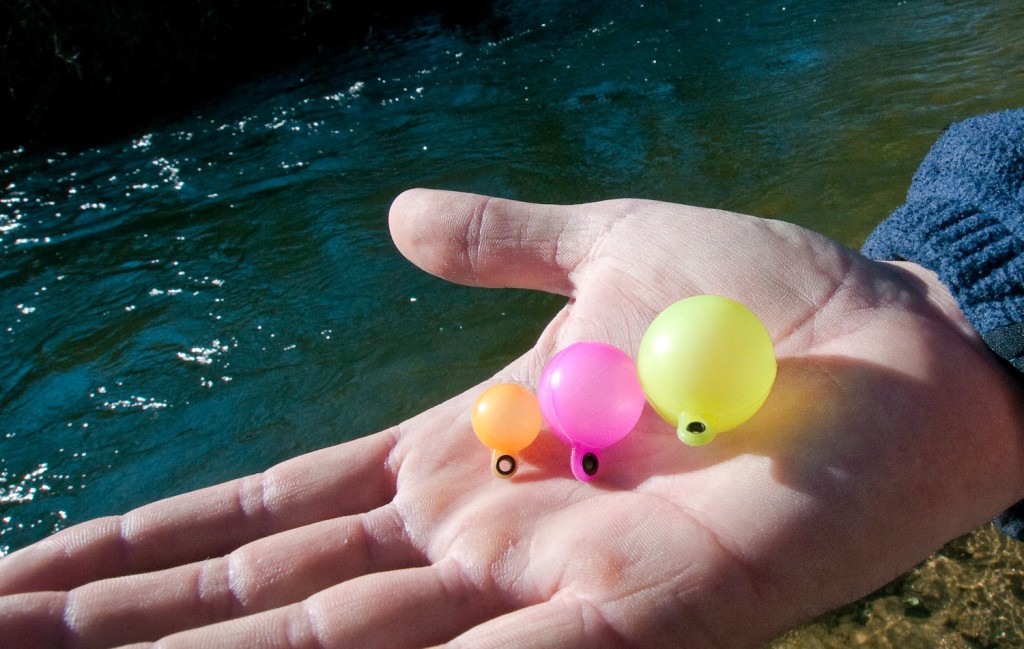
Do Strike Indicators spook fish?
There is a lot of debate over whether strike indicators spook fish. I’m not going to beat around the bush on this one folks. I truly believe that most of the time they don’t. Especially if you rule out calm and slow moving shallow water. Only when I’m dealing with really spooky fish, do I downsize and dull down the color of my strike indicators. The other 80% of the time I think the fish pretty much just find them interesting, possibly a tasty morsel, or just another piece of trash floating over their heads.
What I really think we should be doing is looking at the other side of the coin. In my opinion, we should worry less about spooking fish with our indicators, and worry more about matching the correct size strike indicator to the type of water and rig we’re fishing. That makes much more sense to me, anyway. Now I know there’s lots of you probably saying this is obvious rookie stuff, Kent. I hear you all loud and clear, but bare with me a minute, because I still find myself having to explain to anglers why it’s a good idea to carry different sizes and colors of strike indicators on the water. And as long as I’m doing that, there’s a need for this information to be out there for people to read.
HERE’S HOW I GO ABOUT CHOOSING WHAT STRIKE INDICATORS I USE ON THE WATER.
Read More »Making A 100 Foot Cast Is Easier Than You Think
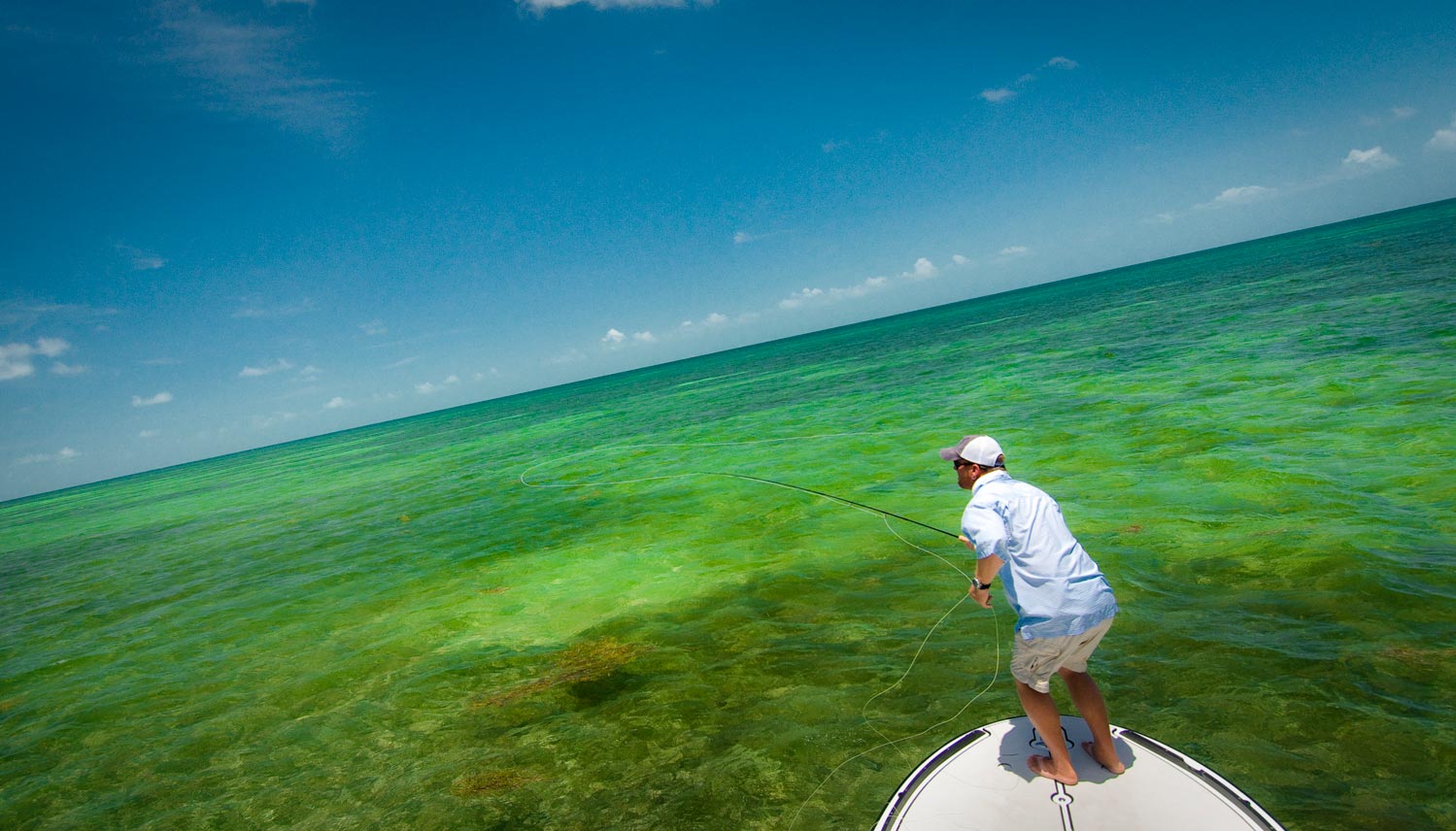
Casting a fly 100 feet is not an unattainable goal.
In response to my review of the T&T Solar a reader asked, “This may be a dumb question, but how do you get 100′ of line out on a cast?” It’s not a dumb question and it deserves a detailed answer.
It’s easier than you think. That doesn’t mean that you will read this article and instantly be able to do it. My point is more that most folks who are trying to make long cast are trying too hard and that’s a lot of their problem. Distance casting is about timing and technique, not power.
and with a little practice a hundred feet is perfectly doable.
You will have to excuse me here, but if I don’t make a few qualifying statements I’ll be called everything but the son of God in the comments section.
First, and likely most important, you don’t have to make a long cast to catch fish. Even in saltwater an accurate forty-foot cast is more important than a long bomb. In trout fishing the long cast is almost non-existent and can even be a liability. That said, there are times when a long cast will add to your catch. There is also a lot to be said for the confidence you gain from mastering the long cast. Making a long cast requires good technique and there’s no downside to being a better caster.
Secondly, let’s not get hung up on the number. Although I can cast 100 feet when everything goes right, 90 feet is a much better working distance for me. I can make that cast with a greater degree of accuracy and consistency. Both are important and your number for accuracy and consistency is what’s important. It will always be a little less than your maximum distance. For the sake of discussion let’s just say “long casts” and define that as anything over 70 feet.
So, if you are still interested in making long casts read on and if not, move on and spare us your dissertation on Euro Nymphing.
The Price of Admission
Read More »Choosing the Right Tippet Size
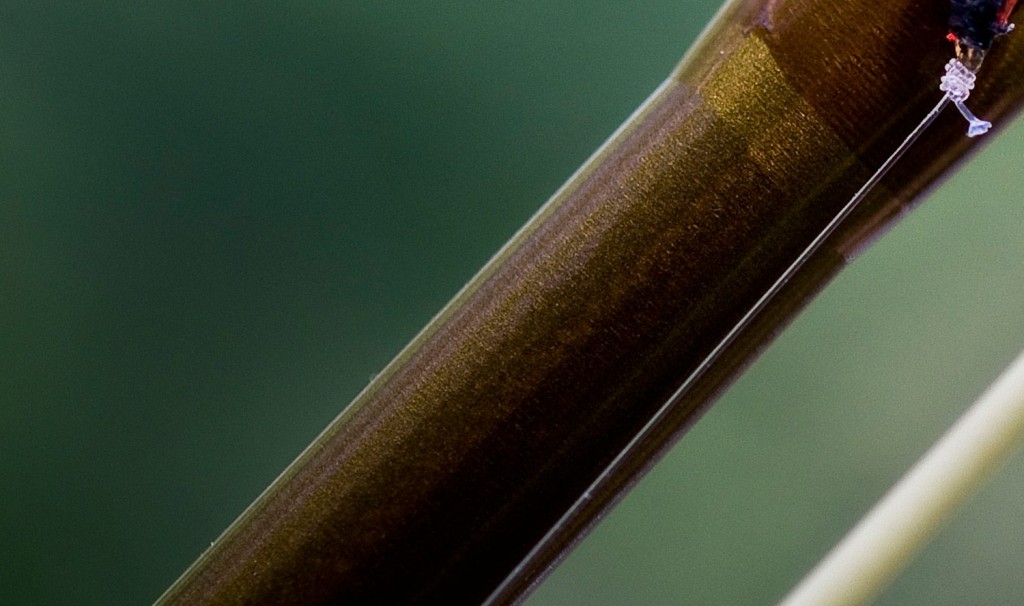
I’ve talked quite a bit about how important it is to correctly select the proper tippet size when your fly fishing for trout.
Most fly fisherman have no problem grasping this, after all, small fly patterns generally call for using smaller tippet and big fly patterns call for larger tippet, right? Well, that’s a general guideline most anglers fish by on the water, but it’s not the only factor fly fishermen should use when choosing what size tippet to fish with. Equally important in tippet choice by anglers is how clear or stained the water is that’s going to be fished, and also what level of fishing pressure the water sees (how educated the trout are).
Choosing the Right Tippet Size Guide
(This is your typical text book guide you would find for a beginner wanting to learn to match the appropriate tippet size with fly pattern size. For the most part it’s spot on, but I think it’s important to point out and understand you don’t always have to follow it exactly)
Tippet Size Hook Size
0X 2, 1/0
1X 4, 6, 8
2X 6, 8, 10
3X 8, 10, 12,
4X 10, 12, 14,
5X 12, 14, 16,
6X 16, 18, 20, 22
7X 18, 20, 22, 24
8X 20, 22, 24, 26, 28
Take for instance hopper fishing. Most anglers would say that 3X tippet is the appropriate size tippet to use if we’re talking about fishing with a good size foam hopper imitation. I would agree this is correct and it’s probably what I use most of the time for this type of fly fishing, however, I’ll never forget floating out west a few years back where my buddy opted instead to use 4X tippet and he dominated us and was the hot stick that morning. The point being, we as anglers shouldn’t always stick to the book when it comes to how we rig up and fish. That morning we were both fishing hoppers. I was in the bow of the boat with 3X and my buddy was in the stern with 4X. I had several refusals at the last second from trout, and on multiple occasions my buddy in the back of the boat caught those fish. It just goes to show, it might be worth putting
My Experience At The G&G Bonefish School
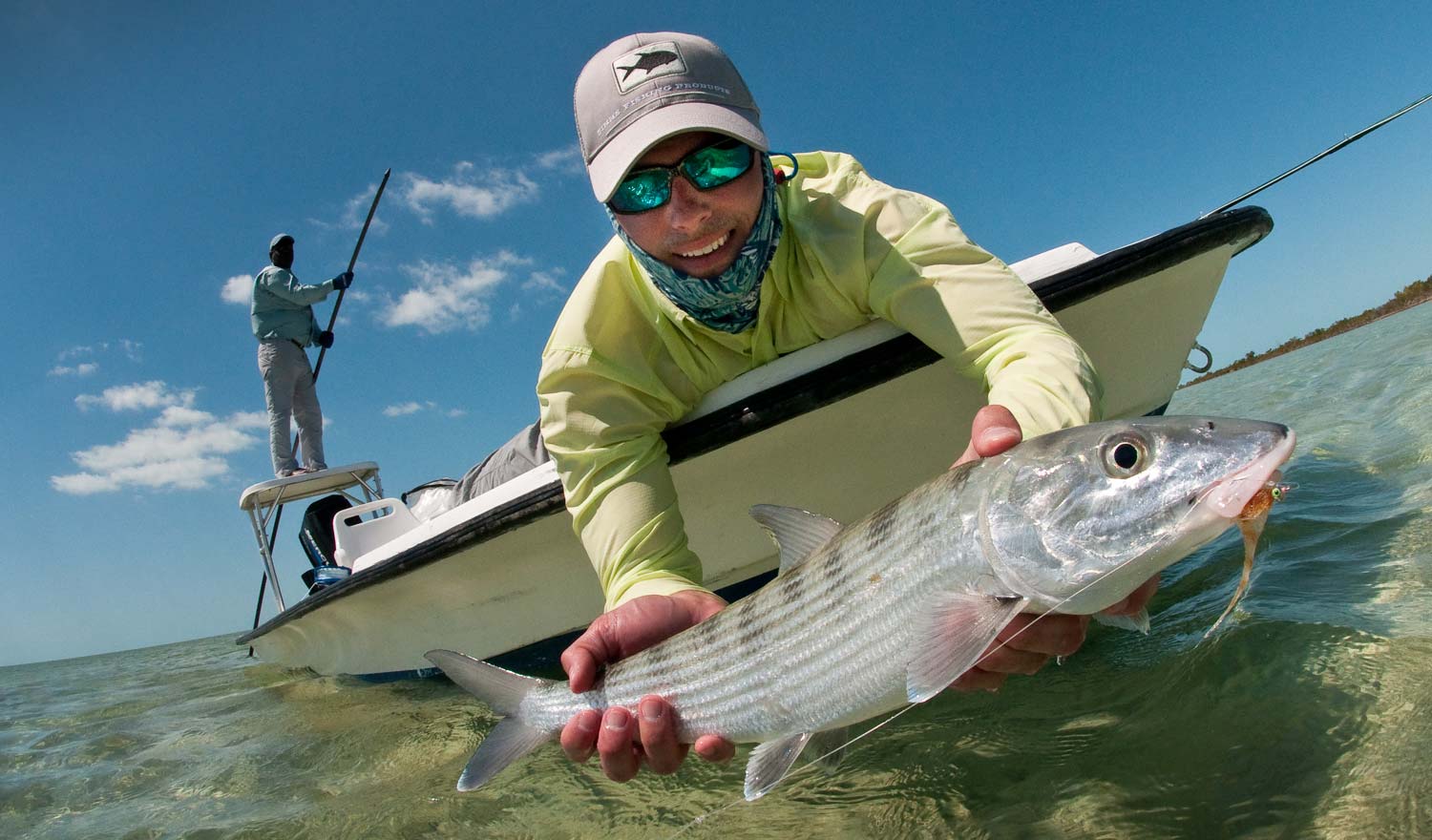
By Jason Tucker
I could not have been more shocked to find myself in the Bahamas than if my spaceship had crashed there. The call came on Thursday. “Can you go to the Bahamas for a week?”
“When?”
“We leave Saturday.”
I checked with my employer, girlfriend and bank account. For once in my life the answer was yes. And so it was that I was off to Bair’s Lodge in the Bahamas on my first hosted trip with Mr. Louis Cahill.
I’ve never quite understood hosted trips, or why folks pay to go on them. I don’t mean this as a criticism, but merely as an observation. I had no idea really what they are all about. I mean, why not just book a trip and go?
Because booking a trip in a far-off place can be intimidating. How do you know the fishing will be good? What do you do if you have a problem with a guide or the lodge? What if you fundamentally misunderstand the fishing and need guidance, flies, or information on the culture, or even what to pack?
There are a number of guides I know that do hosted trips to South America and other places. These guys have a clientele who like fishing with them. It’s a ready-made cocktail. The guides have gone and done the legwork, scouting the location, lodge and fishing, and can act as a liaison. Clients go and know they have someone on their team. The host can get to know the local culture and the fishing and therefore buffer your descent into the experience.
I was grateful to travel the final leg with Louis, as even the casual manner of Andros Air was foreign and disorienting. Basically, when we all showed up, we flew. The flight was brief and uneventful, but when you taxi up to the shack that serves as a terminal on Andros you are greeted by the sight of crashed plane sitting on the edge of the runway.
When we got to Bair’s Lodge after a thirty-minute taxi ride, we were met by our hosts James Hamilton and Liz Ziebarth. But after showing us our room and letting us settle the real test came, for me. Most of the other guests had already arrived and were out on the veranda enjoying cocktails and appetizers. Who were these guys? Would I, a working-class guy, fit in at all. I introduced myself nervously, quickly forgetting their names, vowing to work on it the rest of the week. The appetizers were amazing. Louis came out and did a casting presentation, then helped me tie up a couple custom leaders for bonefish.
After dinner Louis put on a ninety-minute bonefish school with slides from his vast library of images, each illustrating the point being made. For the guys who had done this before this was a refresher course. For the other guys like me for whom this was all new, it was an avalanche of information that would take days to sort out. After that Louis showed several of us how to tie the Bimini twist.
The next day I was fortunate enough to get to fish with Louis. We were unfortunate enough to have terrible weather. We had intermittent showers and high winds, with gray clouds scudding overhead. For us fish were scarce and shots rare. We did find one fish that wanted to play, and I had the privilege of seeing Louis make the cast forty feet into a thirty-knot wind and hooking the fish. If I wondered if Louis was all talk, or really had the chops, there it was.
On the second day of fishing the weather started out much better.
Read More »Fly Fishing for Brown Trout in the Summer and Early Fall
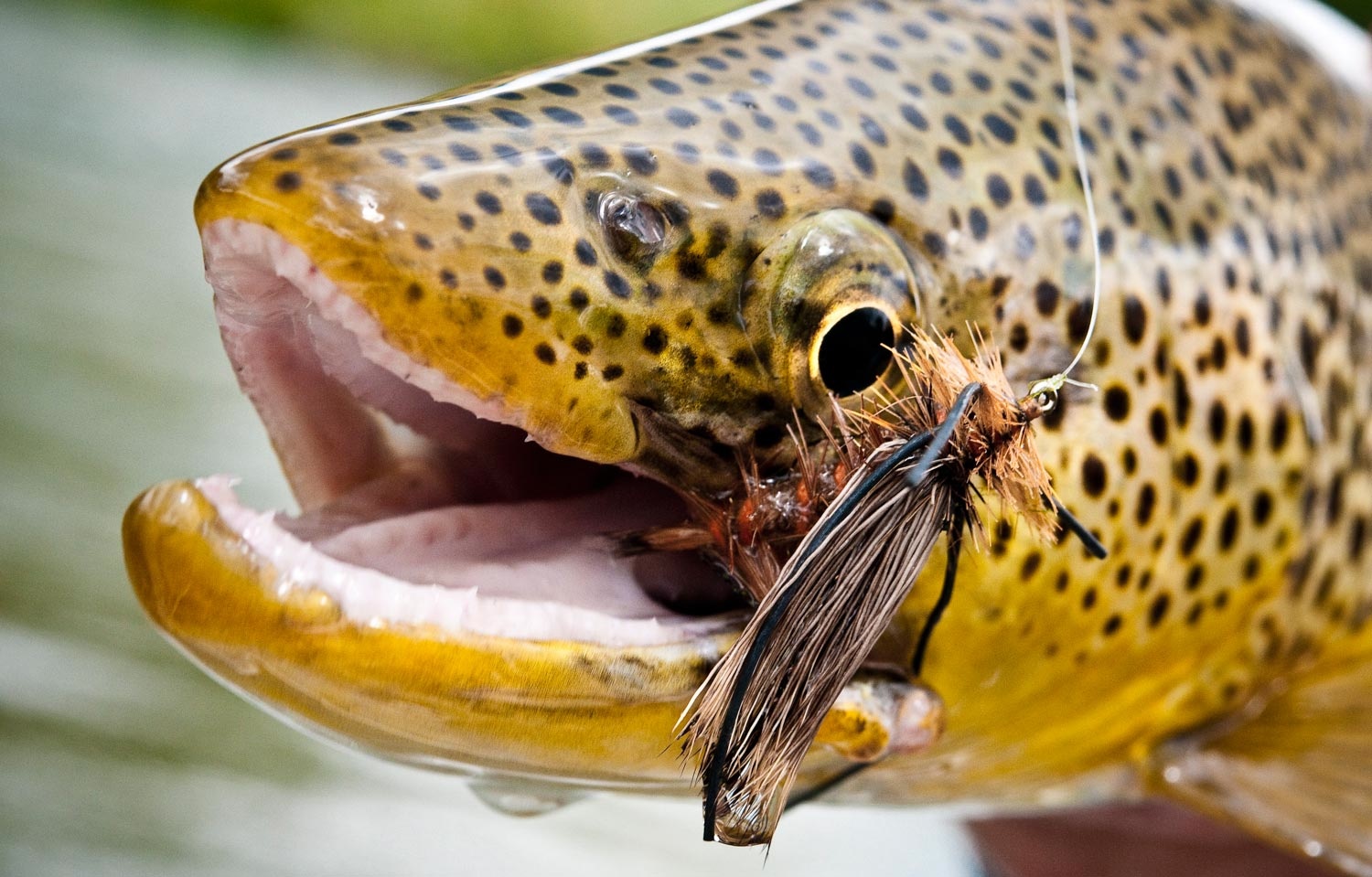
Over the years, I’ve made the mistake many times of walking past trout water that I thought was too shallow to hold trout. Most of the year trout prefer depth transitions where shallow water flows into deeper water. These transitions provide shelter from excessive current and increased safety for trout, and locating them is usually the ticket to finding and consistently catching trout. However, during the summer months, brown trout particularly will often disregard these areas, opting instead to hold tight to the banks in extremely shallow water. They do this to take advantage of terrestrials falling into the water, but I think they also do it because there’s generally shade available and they instinctively know it’s a good spot for them to remain largely undetected.
Read More »